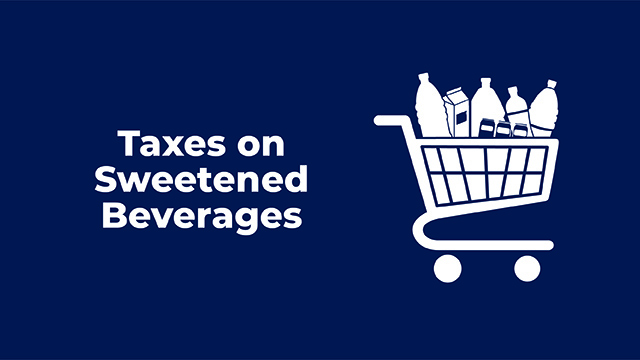Manufacturers, distributors, and retailers in Philadelphia are passing the full amount of the city’s beverage tax on to consumers, according to a new National Bureau of Economic Research working paper. Last year, Philadelphia became only the second city in the United States to tax sugar-sweetened beverages (such as sodas, sweetened teas, and sports drinks) and the first to tax sweetened non-caloric beverages (such as diet sodas). This study is the first to estimate the policy’s impact on prices and beverage availability in stores throughout Philadelphia.
“The study provides valuable rigorous evidence of the one-year impacts of a policy lever that has grown in popularity in the U.S.” said David Jones, one of the paper’s co-authors and a senior researcher at Mathematica Policy Research. “The results will help inform policymakers considering such taxes in other cities and states.”
Between 2016 and 2017, economists from Mathematica Policy Research (David Jones and Anna Hill), the University of Iowa (David Frisvold), and Cornell University (John Cawley) collected data on the price and availability of more than 1,200 sweetened and unsweetened beverages in more than 140 retail stores in Philadelphia and nearby counties, before and after the beverage tax went into effect. They found:
Consumers are paying the full cost of the tax. The full amount of Philadelphia’s tax was added to the retail price. Although the data revealed some variation across stores, the tax of 1.5 cents per ounce typically raised retail prices by roughly 1.5 cents per ounce. On average, this rise represents a 21 percent increase in the price of taxed beverages. By comparison, research in other cities (Berkeley, California, and Boulder, Colorado) found that distributors and retailers absorbed part of the tax, so retail prices rose by less than the amount of the tax.
Although 100 percent of the Philadelphia tax was passed on to consumers on average, there were differences across neighborhoods. For example:
Prices rose less near the border. Retailers near the city border did not raise their prices as much in response to the tax.
Prices for soda rose more in high-poverty neighborhoods. Retailers in high-poverty neighborhoods passed on more of the cost of the tax for regular and diet soda to consumers than in other areas of the city.
Stores are stocking fewer sweetened beverages and more bottled water. After the tax went into effect, stores decreased the availability of regular and diet soda on the shelves and became more likely to stock untaxed beverages, especially bottled water. As a result of the tax, sweetened drinks are more expensive, and they are less available in stores.
“A particularly interesting finding from this study is that stores are more likely to stock bottled water on the shelves because of the tax,” said David Frisvold, a co-author and associate professor of economics at the University of Iowa. “No previous studies of beverage taxes have examined changes in the availability of beverage types.”
The findings in Philadelphia come at a time when a growing number of communities are considering beverage taxes as a solution to rising rates of obesity and diet-related chronic diseases, such as type 2 diabetes. Since 2014, seven U.S. cities, including Philadelphia, have enacted taxes on sugar-sweetened beverages.
The working paper is part of an ongoing, multi-city research study of beverage taxes funded by the Robert Wood Johnson Foundation.
Mathematica Media Contact:
J.B. Wogan
E:jwogan@mathematica-mpr.com
P: 202-250-3547

